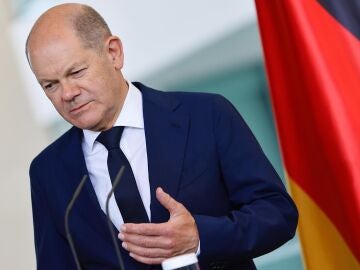
The economy of germany entered into recession in the first quarter of 2023as confirmed by the Federal Statistical Office (Destatis), which has revised downward the GDP data for the first three months of the year, up to -0.3%instead of the stagnation initially estimated, which means chaining two consecutive quarters of falls in activity, after -0.5% in the fourth quarter of 2022.
“After GDP growth entered negative territory at the end of 2022, the German economy has now recorded two consecutive negative quarters,” confirmed Ruth Brand, President of the Federal Statistical Office.
Thus, the German economy has recorded the worst performance among the large economies of the eurozonesince Spain and Italy grew by 0.5% and France by 0.2%, while the average for the euro zone was 0.1%.
Strong price rises have put a drag on the economy
In his analysis, Destatis highlights the drag on the German economy from sharp price riseswhich was especially reflected in household final consumption spending, which decreased by 1.2% in the first quarter of 2023.
This greater reluctance of households to buy was manifested in the lower spending on food and beverages, clothing and footwear in the first quarter of 2023 compared to the previous quarter, while German families they bought fewer new carswhich is likely due, in part, to the discontinuation of subsidies to purchase plug-in hybrids and the reduction of subsidies for electric vehicles in early 2023.
On your side, the cost of Government final consumption also decreased considerably the first three months of 2023, with a contraction of 4.9% compared to the previous quarter.
On the contrary, the Office highlights that investment increased from the fourth quarter of 2022, with an increase in gross fixed capital formation in construction (+3.9%), partly due to the good weather during the first quarter of 2023, while gross fixed capital formation in machinery and equipment was also notably higher at the beginning of the year (+3.2%).
Likewise, positive contributions from foreign trade were also registered, since, compared to the fourth quarter of 2022, exports of goods and services increased by 0.4%. By contrast, imports fell 0.9%, due, in part, to lower imports of mineral fuels, such as crude oil and petroleum products, and chemicals and chemical products.
Source: Lasexta
Ricardo is a renowned author and journalist, known for his exceptional writing on top-news stories. He currently works as a writer at the 247 News Agency, where he is known for his ability to deliver breaking news and insightful analysis on the most pressing issues of the day.












